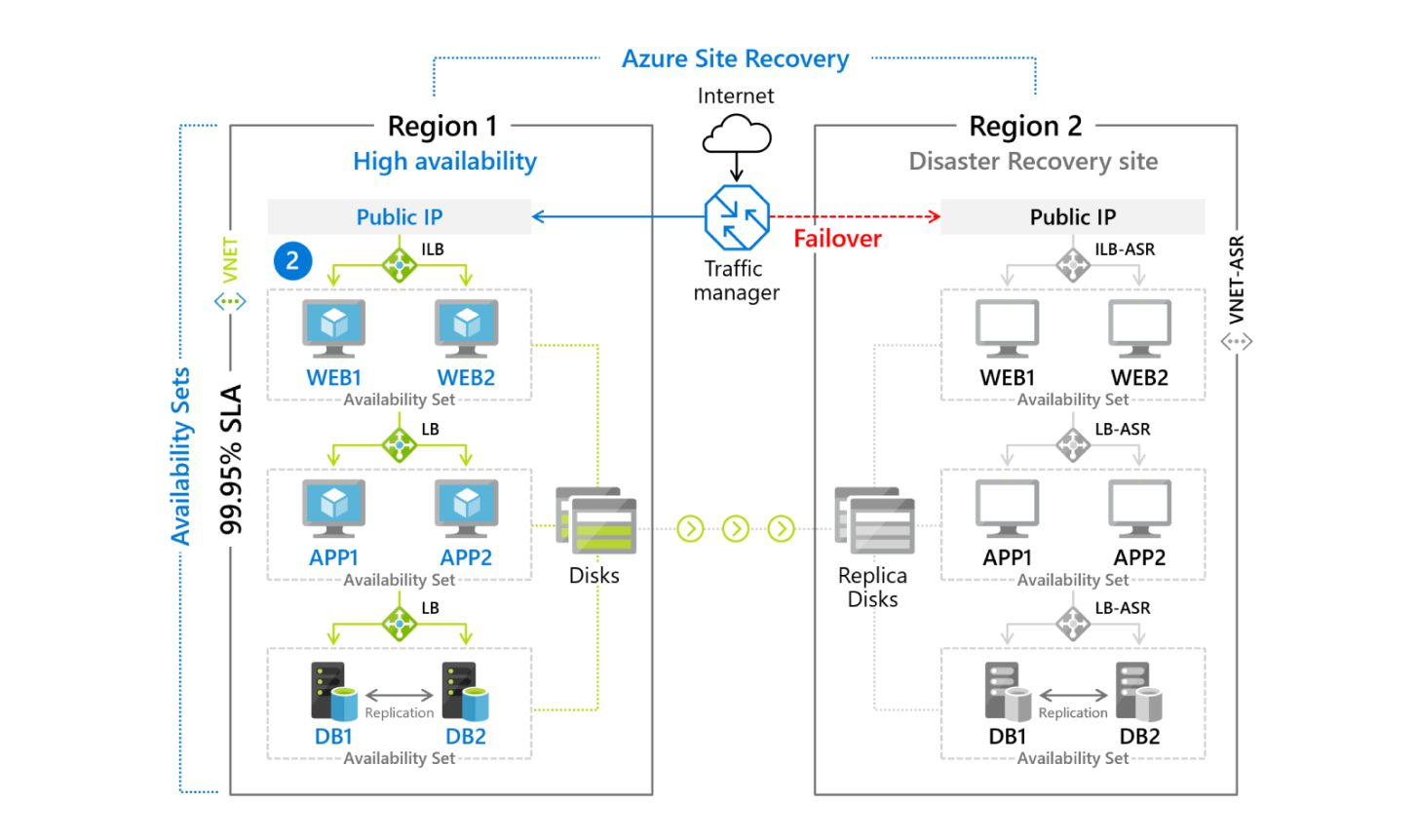Microsoft Named Leader in
2024 Gartner® Magic Quadrant™ for Endpoint Protection Platforms
$5,600 per minute! That’s what your IT downtime is costing you on average… We know, it’s expensive! When your systems experience a failure, cyber-attack, natural disaster, or “just” an accidental data deletion, costs can be astronomical. Using Azure Site Recovery (ASR) services, you can keep doing business, even during major IT outrages.
Azure Site Recovery is a native disaster recovery as a service (DRaaS) from Microsoft. in the 2019 Magic Quadrant for Disaster Recovery as a Service by Gartner, Microsoft has been recognized as a leader in DRaaS based on completeness of vision and ability to execute. The ASR offers ease of deployment, cost-effectiveness, and dependability. Deploy replication, failover, and recovery processes to help keep your applications running during planned and unplanned outages.
Certain companies are only using Azure Backup (AB) for their disaster recovery plan; However, even if they think it should be enough to keep their business running, they soon realize that having copies of their data is not enough during an important IT outrage. That is why Azure Site Recovery is essential to keeping your companies’ data current and viable for recovery. This can help a business recover from an outage within minutes, with near-zero data loss and minimal impact on the company and customers.

What do you need to cover in your Disaster Recovery Plan? Let’s discuss your DR Plan >
What are the benefits of using Azure Site Recovery? Let’s discuss your DR Plan >
Customized DR | With ASR, forget about the “one-size-fits-all” approach to business continuity. With the help of a managed IT Cloud specialist, you can build an entirely customized disaster recovery plan to fit your own requirements.
Service level management | Service management is essential to ASR. Near zero data loss can be achieved to meet existing Recovery point objectives (RPOs). This means there’s minimal downtime and data loss, or business disruption.
Workload replication | ASR seamlessly migrates your on-site workloads and apps to numerous secondary sites including Azure’s own virtual machines (VMs) and physical servers. So, whether you’re looking for on-site or remote management, ASR makes sure your critical data don’t get lost.
Failover | When you deploy ASR across your business, you don’t have to worry about outrage anymore. If an outage happens, all you do is log in to your secondary location and access your replicated workloads from there.
Failback | Want to switch back from your failover site to your primary environment? No problem. ASR lets you move straight back to your original environment without losing any data or changes you’ve made to files.

What’s your NEXT step?
Work with a Gold Microsoft Partner to write a robust Disaster Recovery Plan.
The rapid growth of cloud computing, the emergence of big data, and BYOD in the work environment have made it increasingly challenging to protect your organization’s data. Security Week’s research has shown that data loss at the enterprise level has increased more than 400% over the past few years and will continue to increase.
Nobody likes to think about their business getting impacted by a disaster, and hopefully, you will never experience it, but data shows that you are likely to face some level of compromise along the road.
TMC is here to help with all stages of strategy, planning, and implementation. We can discuss your needs and help you explore all your available options
When creating your disaster recovery plan, you’ll need to weigh the trade-offs between complexity and cost. What data can you afford to be without? For how long? If you lost some data, would that destroy your business forever? To address these challenges, reach out to us, we will help you build the Disaster Recovery Plan that suits your company’s needs!
Ready to approach cloud technology differently and strengthen your Digital Transformation?
Since 1987, thousands of organizations have partnered with TMC to rethink their business processes and technology to empower their employees to achieve more, improve customer experience & adapt to the ever-changing global economy.
The cloud you can trust with the numbers to prove it
90 +
Compliance Offers; the most comprehensive compliance coverage of any cloud provider.
1B+ USD
Investment in security backed by a team of experts, and proactive compliance.
120,000
new Azure customer subscriptions
per month
17,000+
Certified apps and services available on the Azure Marketplace.
3,500+
Global cybersecurity experts that safeguard your business assets and data in Azure.
95%
of Fortune 500 companies trust their business on the Microsoft Azure Cloud



